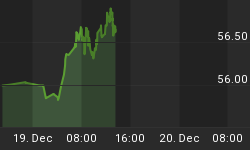It was a volatile week for the U.S. Dollar. However, a strong comeback on Friday allowed the Dollar to finish lower for the week, but well off of its lowest level.
The U.S. Dollar was down on Monday against a basket of currencies, driven by increased demand for higher risk assets. Weakness in the Dollar was triggered by last weekend's statement by the Group of Seven and a better than expected U.S. ISM Services Sector Report.
The Group of Seven in a prepared statement, chose to leave out comments about the value of the Dollar and instead said it was opposed to "excess volatility and disorderly movements" in the Forex markets.
On Monday the U.S. ISM Non-Manufacturing Sector Report was reported better than expected. The report showed the index rise to 50.9, which was higher than pre-report estimates of 50 and up from an August figure of 48.4.
The U.S. Dollar closed lower against a basket of currencies on Tuesday as appetite for risk drove traders away from the lower yielding Dollar into the higher risk currencies.
The strong trend against the Dollar was set overnight when the Reserve Bank of Australia surprised most analysts with a 0.25% rate hike. A story then began circulating that a group of nations including Saudi Arabia and China had begun secret talks to replace the Dollar as the crude oil pricing unit. Traders reacted to both of these news events by selling the Dollar.
The move by the RBA sent a signal to the markets that the Asian-Pacific Region may be in a better position than the U.S. and Europe to mount a strong recovery out of the recession. In addition, some traders now believe the Euro Zone is in better shape than the U.S.
The story about the Dollar being replaced as the main currency for pricing oil was denied by Saudi Arabia, but nonetheless should be a major concern for Dollar traders. So far the Treasury, the so-called "Defenders of the Dollar" has not made a comment, but their usual line is "we stand behind a strong Dollar." This plan may take years to implement, but short-term traders reacted negatively to the news.
Wednesday, the U.S. Dollar tried to mount a rally throughout the day, but failed at the close and ended up mixed for the day against most major currencies. Trading was light and ranges tight as traders awaited the European Central Bank and Bank of England monetary policy statements on October 8th.
The U.S. Dollar finished sharply lower on Thursday. The strong rally in equity markets drove up demand for higher yields as investors became more optimistic about a global economic recovery. Comments by Fed Chairman Ben Bernanke regarding a change in monetary policy from loose to tight have started to have a positive influence on the Dollar. This news set up the Greenback for the rally on Friday.
On Friday the U.S. Dollar surged against most major currencies. Although the Dollar couldn't post a weekly closing price reversal up, it did close well off its low which is a strong indication there may be follow-through buying early next week.
The Dollar was boosted by comments from Fed Chairman Bernanke in which he stated that the Fed would raise interest rates and implement a tight monetary policy if when the economy "has improved sufficiently."
For the week, the EUR USD managed to finish higher but off its high for the year at 1.4843. The European Central Bank left interest rates unchanged and predicted a rocky recovery.
The GBP USD finished lower for the week. Comments from Bernanke are making it look like the U.S. economy will recover well ahead of the U.K. economy. The Bank of England left interest rates unchanged at 0.50%. In addition, the BoE decided to maintain its asset-buyback program. The chart indicates that 1.5272 is the next major downside target.
The USD JPY had a volatile week. The Dollar initially weakened against the Yen as it looked as if U.S. interest rates would continue to fall. Traders drove this currency pair through the recent bottom but above the low for the year at 87.11. Traders were initially worried the Bank of Japan would intervene at the low levels, but that never happened. Comments from Fed Chairman Bernanke regarding a possible hike in U.S. interest rates have led traders to believe that the U.S. economy will recover faster than the Japanese economy and that the Yen would once again become the carry currency of choice.
The USD CAD closed sharply lower. Demand for higher risk assets such as equities and crude oil triggered the initial weakness, but it was a bullish Canadian unemployment report which eventually fueled the acceleration to the downside. A new swing top has been formed on the weekly chart at 1.099. The weekly chart also indicates that 1.0297 is the next downside target.
Talk of a possible hike in U.S. interest rates helped weaken the AUD USD and NZD USD on Friday. These moves were most likely position paring after a strong rally this week and not a sign of a change in trend. Australian Dollar traders will support this currency on any weakness because of the strong possibility of another rate hike by the Reserve Bank of Australia in November. The next rally could be tentative for the New Zealand Dollar because of hawkish comments from the Reserve Bank of New Zealand. The RBNZ is on record voicing its concerns about the value of the Kiwi and its possible negative effects on the economy's recovery.















